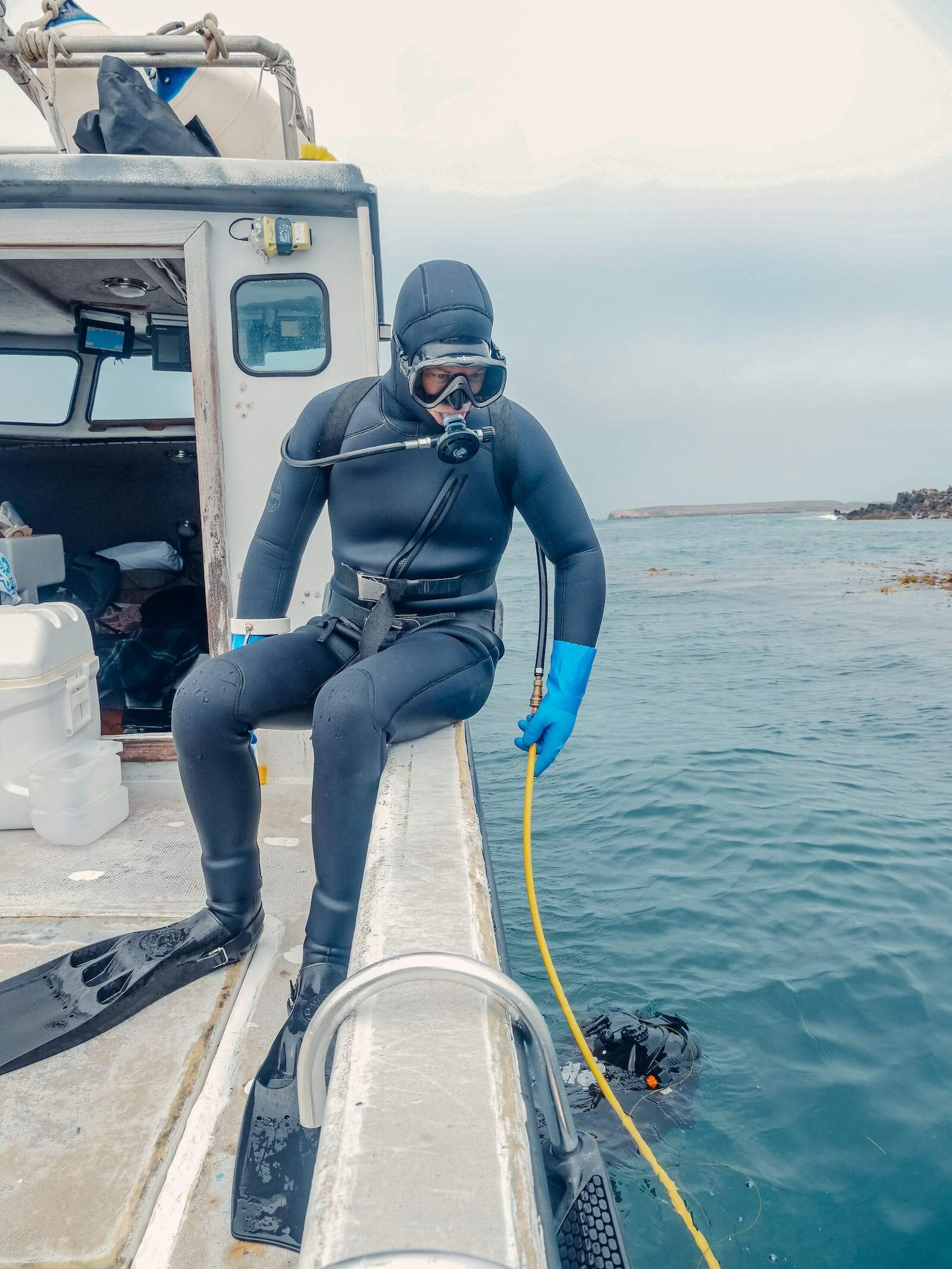While most divers use a buoyancy control device (BCD) to ascend, descend, or maintain their position in the water, others don’t like the extra bulk and have wondered: can you go scuba diving without a BCD?

Yes, you can scuba dive without a BCD, though it is not recommended. BCDs make adjusting your buoyancy much easier and more consistent, drastically decreasing the risks of barotrauma and the bends, and helping you to conserve energy.
In this article, we will go over the potential benefits and challenges associated with diving without a BCD so you can decide if this option suits your personal diving preferences.
Is It Possible to Dive Without a BCD?
Yes, it is possible to dive without a BCD but it comes with challenges. Since a BCD is responsible for managing your buoyancy by inflating and deflating an air bladder connected to your air tank, without one you need to do all of this using your own energy. Diving without one can make ascending, descending, and achieving neutral buoyancy more difficult.
In the past, before the invention of BCDs, divers used to dive without an air bladder. Some divers into vintage diving gear still occasionally do this. The key to diving without a BCD lies in finding the perfect balance between breath control, finning technique, and proper weighting.
A modern alternative to using a traditional BCD is the Avelo system, which allows divers to achieve neutral buoyancy by borrowing water from the ocean to offset the buoyancy of the tank. This system eliminates the risk of instability caused by rapid buoyancy changes.
Keep in mind that diving without a BCD might not be advisable for everyone, especially less experienced divers. You need to understand the potential risks and challenges and be comfortable with your abilities before attempting such a dive.
Reasons for Diving Without a BCD
Some divers might be interested in the idea of diving without a BCD for various reasons. One possible incentive could be the pursuit of a more minimalist, lightweight gear setup. By eliminating the bulk of a BCD, you might feel a closer connection to the underwater environment and enjoy a more streamlined experience in the water.
However, safety should always come first when it comes to scuba diving. The use of a BCD is highly recommended, especially for sport and technical divers. BCDs provide useful benefits such as maintaining proper buoyancy and providing a logistical foundation for your equipment. Diving without one can compromise your safety, especially if you’re not highly skilled in buoyancy control, which is crucial throughout a dive.
When you consider diving without a BCD, you should also keep in mind that it won’t work for all dive conditions. In cold water dives, which require wearing more weight to submerge, the absence of a BCD might not be practical. Additionally, for technical dives that involve carrying additional cylinders, a BCD provides essential support and organization for your equipment.
Risks of Diving Without a BCD
Diving without a buoyancy compensator device (BCD) poses several risks that can negatively impact your safety underwater. In this section, we will discuss some of the main dangers associated with scuba diving without a BCD.
- Inability to achieve neutral buoyancy: A BCD plays a crucial role in helping you achieve and maintain neutral buoyancy while at a particular depth. When you dive without a BCD, it becomes challenging to balance yourself underwater, resulting in constant sinking or floating. This difficulty in maintaining your position can make your dive much more challenging.
- Increased risk of Barotrauma: Barotrauma is a condition caused by pressure changes in the surroundings, affecting the air-containing spaces in your body. Using a BCD helps you manage these pressure changes by allowing you to adjust your buoyancy as needed. Without it, maintaining your depth and controlling your ascent rate is much more difficult, increasing the risk of barotrauma and related injuries.
- Difficulty in maintaining depth control: Maintaining proper depth control is essential to ensure a safe and enjoyable dive. A BCD helps you adjust your buoyancy according to your depth and changing conditions such as air consumption and weighting. Diving without a BCD can make it challenging to maintain consistent depth control, which can lead to unintentional ascents or descents and put you at risk.
Frequently Asked Questions
How can I maintain buoyancy without a BCD?
Maintaining buoyancy without a BCD can be challenging, but it’s possible with proper weight distribution and breath control. You’ll need to adjust the amount of weight you carry to achieve neutral buoyancy and constantly monitor your breathing to maintain it. Practice in shallow water before attempting deeper dives.
What are the alternatives to using a buoyancy compensator?
There are a few alternatives to using a traditional BCD for buoyancy control. Some divers choose to use a weight harness, tank harness with shoulder straps, or even only their wet suit for minimal buoyancy control. However, these options don’t provide the same level of safety and control as a BCD.
How can a diver control their ascent rate without a BCD?
Controlling your ascent rate without a BCD requires careful management of your breath and, in some cases, kicking techniques. You need to exhale gradually and kick gently upwards to control your ascent. Monitoring your depth and being aware of your surroundings is essential, as well as using a dive computer to track your ascent rate.
What are the risks of scuba diving without the proper equipment?
Diving without proper equipment such as a BCD can put you at risk of decompression sickness, uncontrolled ascents, or difficulty maintaining neutral buoyancy. These risks increase the chances of accidents and can lead to serious injuries or even death. It’s vital to use appropriate gear and follow safe diving practices to minimize these risks.
Sources:

